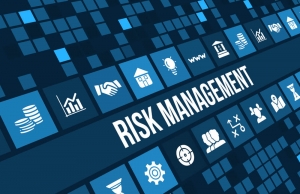عرض العناصر حسب علامة : الاعمال التجارية
الثلاثاء, 27 سبتمبر 2022 10:00
إدارة العمليات: كيف تطلق العنان لسير العمل في عملك
يعد فهم العمليات التي تقوم عليها عملياتك وكيفية إدارتها سرًا اساسياَ للنجاح بالإضافة إلى أنه أصبح أسهل من أي وقت مضى.
معلومات إضافية
-
المحتوى بالإنجليزية
Process management: How to unleash your business workflows
Understanding the processes that underpin your operations and how to manage them is a poorly kept secret to success – plus, it’s getting easier than ever to achieve.
From sole traders to multinational corporations, the importance of process management as an underlying foundation for good business management (and, in turn, steady and sustainable growth) can’t be understated.
Not to be confused with program management or process management in computing, Wikipedia defines process management for businesses as ‘the discipline in which people use various methods to discover, model, analyse, measure, improve, optimise and automate business processes’.
So, to truly understand process management, the business manager not only needs to understand which processes are being used, but how they’re being achieved.
That means gaining insight into the people involved, be they employees, contractors, suppliers or even customers, as well as understanding the technologies they use to facilitate your business processes.
Terms like ‘workflow’ and ‘business process’ are often used interchangeably, especially when discussing the software used to support them.
For example, you might find a sales team describe the work they do as a process that is documented by the customer relationship management (CRM) system, while at the same time the work that the marketing team does is described in terms of their workflows (perhaps working with both a CRM system and a content management system).
Key processes and workflows
As businesses grow, their operations become more complex as more processes are added and employees join the organisation.
And as they specialise, whether it’s because of industry sector or business model, those processes become more unique to the business’s niche.
Still, the majority of all core workflows and processes fall into common categories, as detailed below.
Revenue generation
This includes your sales and customer service, marketing and advertising activities – essentially everything involved with the transactional side of your business.
Supplier management
These processes cover supply management and tracking, as well as all your orders, inventory and creditor payment processes.
People management
Think scheduling and rosters, time tracking and payroll – it’s all covered by people management.
Contractors, part-time staff, and management (right up to the executive suite) will all need to be considered when it comes to onboarding and training exercises, too.
Cash flow management
Bringing it all together, cash flow management uses business intelligence and analytics in tandem with accounting and bookkeeping activities to create a view of your overall business health.
Compliance
As a guiding layer, compliance activities exist for every facet of business operations.
Compliance requires a business to keep adequate documentation, to process tax obligations and maintain key certificates, licenses and contracts.
Slight differences in how work is defined and described can cause miscommunication in a complex business and could even cause structural and data ‘siloes’.
Until recently, growing businesses have had to cobble together any number of different solutions in order to deliver to their offering, often leading to growing pains when operations outgrew their current licenses and infrastructure.
Today, these challenges can be easily avoided.
That’s because modern business management technology can work to integrate many separate processes within a common platform, improving business connectivity and lowering the burden of business complexity in general.
Doing so enables a business to discover and deliver on sources of additional productivity based on faster, more accurate business intelligence.
Whether it’s reducing the number of errors creeping into sales data or making simple changes to lift employee engagement, integrating your core business processes in the one place makes it all possible.
In other words, a unified business management platform is the first step towards unleashing your workflows and unlocking future success.
نشر في
موضوعات متنوعة
الإثنين, 25 يوليو 2022 11:20
مقدمة في إدارة المخاطر
معلومات إضافية
-
المحتوى بالإنجليزية
What is Risk Management?
Risk management encompasses the identification, analysis, and response to risk factors that form part of the life of a business. Effective risk management means attempting to control, as much as possible, future outcomes by acting proactively rather than reactively. Therefore, effective risk management offers the potential to reduce both the possibility of a risk occurring and its potential impact.
Risk Management Structures
Risk management structures are tailored to do more than just point out existing risks. A good risk management structure should also calculate the uncertainties and predict their influence on a business. Consequently, the result is a choice between accepting risks or rejecting them. Acceptance or rejection of risks is dependent on the tolerance levels that a business has already defined for itself.
If a business sets up risk management as a disciplined and continuous process for the purpose of identifying and resolving risks, then the risk management structures can be used to support other risk mitigation systems. They include planning, organization, cost control, and budgeting. In such a case, the business will not usually experience many surprises, because the focus is on proactive risk management.
Response to Risks
Response to risks usually takes one of the following forms:
Avoidance: A business strives to eliminate a particular risk by getting rid of its cause.
Mitigation: Decreasing the projected financial value associated with a risk by lowering the possibility of the occurrence of the risk.
Acceptance: In some cases, a business may be forced to accept a risk. This option is possible if a business entity develops contingencies to mitigate the impact of the risk, should it occur.
When creating contingencies, a business needs to engage in a problem-solving approach. The result is a well-detailed plan that can be executed as soon as the need arises. Such a plan will enable a business organization to handle barriers or blockage to its success because it can deal with risks as soon as they arise.
Importance of Risk Management
Risk management is an important process because it empowers a business with the necessary tools so that it can adequately identify and deal with potential risks. Once a risk has been identified, it is then easy to mitigate it. In addition, risk management provides a business with a basis upon which it can undertake sound decision-making.
For a business, assessment and management of risks is the best way to prepare for eventualities that may come in the way of progress and growth. When a business evaluates its plan for handling potential threats and then develops structures to address them, it improves its odds of becoming a successful entity.
In addition, progressive risk management ensures risks of a high priority are dealt with as aggressively as possible. Moreover, the management will have the necessary information that they can use to make informed decisions and ensure that the business remains profitable.
Risk Analysis Process
Risk analysis is a qualitative problem-solving approach that uses various tools of assessment to work out and rank risks for the purpose of assessing and resolving them. Here is the risk analysis process:
1. Identify existing risks
Risk identification mainly involves brainstorming. A business gathers its employees together so that they can review all the various sources of risk. The next step is to arrange all the identified risks in order of priority. Because it is not possible to mitigate all existing risks, prioritization ensures that those risks that can affect a business significantly are dealt with more urgently.
2. Assess the risks
In many cases, problem resolution involves identifying the problem and then finding an appropriate solution. However, prior to figuring out how best to handle risks, a business should locate the cause of the risks by asking the question, “What caused such a risk and how could it influence the business?”
3. Develop an appropriate response
Once a business entity is set on assessing likely remedies to mitigate identified risks and prevent their recurrence, it needs to ask the following questions: What measures can be taken to prevent the identified risk from recurring? In addition, what is the best thing to do if it does recur?
4. Develop preventive mechanisms for identified risks
Here, the ideas that were found to be useful in mitigating risks are developed into a number of tasks and then into contingency plans that can be deployed in the future. If risks occur, the plans can be put to action.
Summary
Our business ventures encounter many risks that can affect their survival and growth. As a result, it is important to understand the basic principles of risk management and how they can be used to help mitigate the effects of risks on business entities.
نشر في
موضوعات متنوعة


